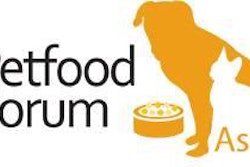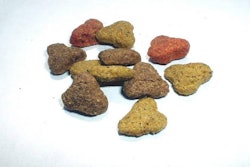Over half of US dog owners say their dogs’ nutrition is more confusing than their own, with 68% of Millennial dog owners believing that, according to a recent survey commissioned by Just Right by Purina. Further, nearly half of the owners surveyed said choosing the right food for their dogs is the most difficult part of pet ownership, and almost 25% said they felt overwhelmed by the number of choices available the last time they bought dog food.
That is a lot of confused, overwhelmed dog owners, even if you don’t extrapolate the 900 participating in the online survey to the 46.3 million dog-owning households in the US (per the 2013-2014 APPA National Pet Owners Survey). Given the proliferation of dog food brands, lines and products within each line, and the fact that most owners don’t have a good understanding of their pets’ nutritional needs, I think some level of extrapolation to the overall dog-owning population is warranted.
New product development has been one of the driving forces for continued success in the pet food market, so arguably no one in the industry expects pet food companies to pull back on bringing out new products. Yet, perhaps that success could be driven even higher by helping pet owners sort through the mind-numbing array of choices confronting them in the pet food aisle.
A starting point might be to improve pet food labels, better explaining exactly what’s in the food and how it might benefit pets. Earlier this year, the Pet Food Institute (PFI) convened a task force to explore that concept. The task force is headed by Jim Barritt, government and regulatory affairs manager for Mars Petcare US, who presented his team’s findings and work to date during the 2015 Feed and Pet Food Joint Conference at the end of September. (The conference was organized by PFI and the National Grain & Feed Association.)
Barritt said the task force’s work arose from 2013 research that Mars conducted in hopes of having some influence on potential new pet food labeling rules to come from the US Food and Drug Administration (FDA) as part of the FDA Amendment Act (FDAAA), passed back in 2007 in the wake of the melamine-related pet food recalls. (FDA’s development of regulations under that law apparently got waylaid by the agency’s focus on the Food Safety Modernization Act, but now that rules under FSMA have been developed and are being implemented, the word is that FDA will soon turn its attention back to FDAAA.)
To find out what consumers thought about pet food labels, Mars conducted focus groups that revealed pretty dismal attitudes toward what pet food companies put on their packages, whether by design or for regulatory compliance. For example, Barritt said, the findings showed that “no one reads the backs of products.” And what consumers do read, they find to be confusing and overwhelming. (No wonder the recent survey by Purina found dog owners to profess so much angst over selecting a dog food.)
Digging into the focus group findings, Barritt said Mars discovered that all required elements on a pet food label posed problems for consumers. Yet, encouragingly, the pet owners participating in the research also had recommendations:
- Ingredients—the list is too long, with too many ingredients; it looks cluttered, with everything running together; there are too many unfamiliar terms (and some pet owners assume they're just chemicals). Thus, most consumers read just the first two or three ingredients.
Recommendation: Group the major ingredients, and break out “lesser” ingredients like vitamins and minerals, and put those below.
- Guaranteed analysis—this is a real bugaboo for pet owners. They don’t know how to read it, who guaranteed it and how, they said; they also have a problem with minimum and maximum levels, and terms like “crude” and “non-essential” ingredients. (If they're not essential, why are they there?)
Recommendations: The pet owners said they’re familiar with the Nutrition Facts box on human food labels—they don't necessarily understand it but at least are familiar with it—and thought that is much more straightforward than the guaranteed analysis.
- Nutritional statement—this is read the least, with pet owners saying they don’t know who the Association of American Feed Control Officials (AAFCO) is, or what “complete and balanced” means.
Recommendation: Use a badge or seal instead.
- Daily feeding guide—the pet owners said they sometimes use it when first buying a product, but often not.
Recommendation: A chart is definitely better than text or a statement.
- Manufacturing statement—pet owners are confused by terminology such as “manufactured by” vs. “distributed by.”
Recommendation: They want to see where products are made and who made them, if not the brand owner.
Mars took these findings to FDA, Barritt said, in the spirit of influencing FDAAA pet food labeling rules. The agency seemed open to some of the ideas, where feasible; for example, the required manufacturing statement is tied to the Code of Federal Regulations, meaning a change would require the US Congress to rewrite legislation.
The next stop was PFI and the resulting task force. Its work to date includes a Nutrition Facts chart—now on its 17th version and still a work in progress, Barritt emphasized—with the major ingredients at top and the vitamins and minerals broken out below. He said the force would like to call the vitamins and minerals by their common vs. chemical names, but AAFCO would probably push back on that. The chart would also include the guaranteed analysis but drop the term “crude” as well as minimum and maximum levels.
The PFI task force concept includes a purpose statement for the intended use of the product that would be used in conjunction with a seal to go on the front of the package, essentially eliminating the AAFCO statement, Barritt said. It would still include the term “complete and balanced” and the validation method (AAFCO nutrition profiles or AAFCO feeding trials) for that claim. In addition, the task force has worked up a chart for feeding guidelines and calorie content statements (though “cleaned up” from AAFCO language). They still need to address supplemental feeding guidelines and other elements.
While FDA has not seen the task force’s work yet, Barritt said FDA has told Mars that when FDAAA rules come out, they will include a Nutrition Facts box, perhaps similar to what the task force has envisioned. I have also wondered if that is the path to helping pet owners better understand what’s in the pet foods they’re buying or considering, and how the foods might meet their pets’ nutritional needs. Even better, I think, would be recommended daily allowances (RDAs) and to what level the ingredients in that pet food meet the RDAs for the given pet, based on the Nutrient Research Council’s Nutrient Requirements of Dogs and Cats. But any step toward making the pet food label more useful and understandable is a step in the right direction.

















